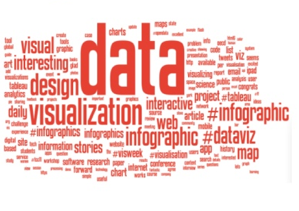Multiple Sclerosis (MS) is a debilitating and complex disease with an unknown cause — and for which there is currently no cure. The SUNY Buffalo is home to one of the leading multiple sclerosis (MS) research centers in the world, and as reported in Healthcare IT News, the research team is using
Multiple Sclerosis (MS) is a debilitating and complex disease with an unknown cause — and for which there is currently no cure. The SUNY Buffalo is home to one of the leading multiple sclerosis (MS) research centers in the world, and as reported in Healthcare IT News, the research team is using IBM Netezza and Revolution R Enterprise to accelerate its study of more than 2,000 genetic and environmental factors that may contribute to MS symptoms:
Shawn Dolley, vice president and GM of global healthcare and life science at IBM Big Data (he worked for Marlborough, Mass.-based Netezza before IBM’s acquisition of that company in 2010), remembers when Harvard Medical School researchers told him not long ago that, when it came to solving problems with big data analytics, “We have four questions we can ask per month.” Why four? “Well, there’s four weekends per month,” he recalls them saying. “That’s how long it takes us to run our jobs.”
Now, using an IBM Netezza analytics appliance, in conjunction with software from Revolution Analytics, researchers can analyze disparate data in a matter of minutes instead of days, regardless of what type or size it is, say IBM officials. The technology automatically consumes and analyzes the data, and makes the results available for further analysis, leaving researchers more time to analyze trends.
As described in this case study, SUNY Buffalo researchers were able to accelerate their research by reducing computation times more than 100-fold in the search for significant interactions between thousands of genetic and environmental factors. The R language itself also accelerates the research process, by making it easier to include new kinds of variables such as discrete dependent, Poisson dependent or continuous normally-distributed variables by simply adding a few lines of code. (Using another language would have required a re-writte of the entire algorithm.)
From an analytics perspective, the researchers were able to write a version of their software tools in in Revolution R Enterprise for IBM Netezza, so that all their reporting as well as our analysis is all consolidated in one place. This prevents the need to move very large amounts of data in and out of Netezza, which would cause further delays. They were also able to use a wider variety of data sets.
The SUNY researchers were able to:
- Use the new algorithms and add multiple variables that before, were nearly impossible to achieve.
- Reduce the time required to conduct analysis from 27.2 hours without Netezza to 11.7 minutes with it.
- Carry out their research with little to no database administration (Unlike other HPC platforms or databases available, Netezza was designed to require a minimum amount of maintenance)
- Publish multiple articles in scientific journals, with more in process.
- Proceed with studies based on ‘vector phenotypes’—a more complex variable that will further push the Netezza platform.
You can learn more about the research by the SUNY Buffalo team in this IBM Netezza blog post, and in the IBM press release at the link below.
IBM Press Releases: Leading Global Multiple Sclerosis Research Center Taps IBM Analytics to Improve Patient Care






